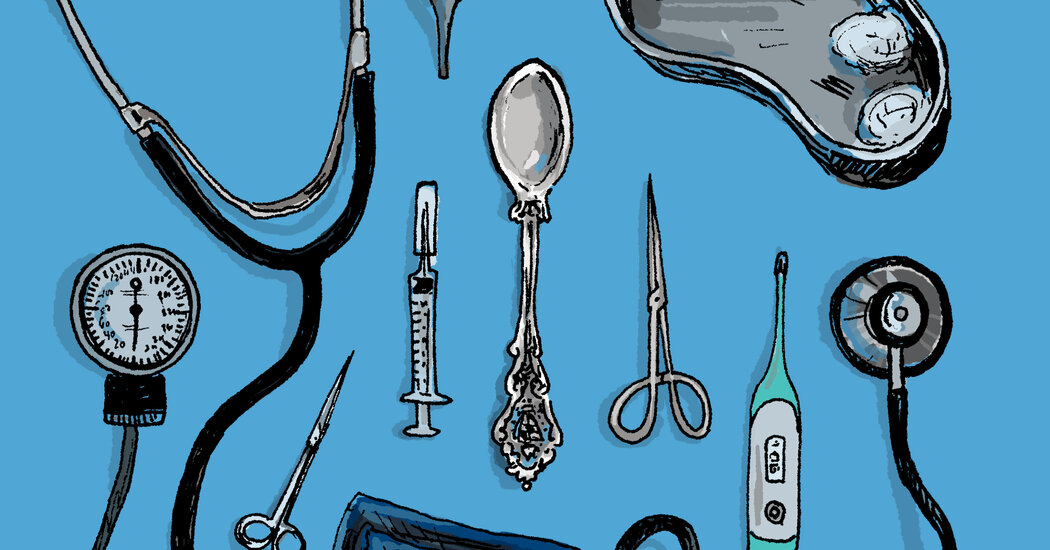Copyright The New York Times

Who gets to be a doctor in America is about to change. An under-discussed component of President Trump’s big, beautiful domestic policy law is a new loan cap that will slowly push aspiring physicians from lower-income backgrounds out of medicine and drive future doctors away from primary care. Effective next year, federal student loans for professional graduate programs, including medical school, will be capped at $50,000 per year. Total lifetime borrowing will be limited to $200,000 for medical school and $257,000 across all degrees, including college. Grad PLUS loans, which almost half of all medical students currently rely on to help cover the cost of training, will be eliminated entirely. The alternative is private loans, which tend to be considerably more expensive, and far less forgiving. The new caps are dissociated from reality. In 2025, the median cost of attending four years of medical school was $297,745 for public schools and over $400,000 for private ones. About 70 percent of graduating medical students in 2025 have loans, and among those who owe money, the average student debt is $223,130. But an average is just that. We calculate that nearly 30 percent of students owe over $257,000, and that one in five students graduate with over $300,000 in debt. The impact of President Trump’s law is clear: affluent students will manage, while lower-income students will think twice about going to medical school, if not forego it altogether. Fewer students will hail from rural areas, and therefore fewer will return to such communities to care for patients. By selecting for those who can afford to pay, the loan cap may appear to reduce average medical debt. But the physician shortage will worsen and health care access will grow even more unequal. With the government abrogating its role in supporting medical students, the onus falls on medical schools to rethink how education can be more affordable and effective. The smartest, fastest and most pragmatic solution is simple: shorten medical school to three years. The structure of medical education hasn’t fundamentally changed for 115 years. In 1910, medical education reformer Abraham Flexner helped turn a chaotic landscape of short-term proprietary schools, famous for producing “snake oil salesmen,” into today’s standardized, eight-year pipeline: four years of college followed by four years of medical school. At that time, this model made sense. Now it doesn’t. Today’s students enter medical school with much more extensive preparation in molecular biology, biochemistry, neuroscience and other STEM fields than their early 20th-century predecessors. Consequently, the traditional two years of classroom study in subjects like anatomy and microbiology have largely been condensed to about 15 months, leaving nearly three years for hands-on hospital training. The final year of medical school has become a loosely structured period spent applying for residency, taking elective courses, visiting hospitals in other cities or volunteering abroad — all while still paying full tuition. In effect, it is a costly gap year. Many people, including one of us, have long pushed for three-year medical schools. The financial case is obvious: Shortening medical school by a year reduces costs by 25 percent and adds a year of physician earnings to help pay off educational debts. At a place like the University of Pennsylvania, where we study and work, three years would bring total medical school tuition to around $230,000, not far above the borrowing limit. Short of granting free tuition — a privilege few schools will ever be able to offer — three-year medical schools are the single most effective way to lower debt burden on students. Accelerated programs are hardly new. For the past 60 years, Duke has collected tuition for four years, but the actual medical training only comprises three. There is an intermediary year — that students pay tuition for — dedicated to mandatory research. The University of California, Los Angeles recently adopted a similar structure. New York University’s Grossman School of Medicine piloted a three-year program in 2013 and, across seven classes of graduates, found no compromises in quality and better performance on internal medicine internship milestones. In 2023, N.Y.U. transitioned all students to a three-year curriculum, allowing students the option to add a fourth year for additional degrees or research. Skeptics have raised concerns that accelerated medical school programs might lead to higher burnout rates and stress, but these claims are unsupported by evidence. Rather, a study published in 2022 suggests students in three-year programs rated their learning environment more positively than their peers in traditional four-year programs. They also more frequently agreed that their coursework was relevant for treating patients. Financial stress, on the other hand, takes a significant toll. A recent review found that debt had adverse effects on medical students’ stress levels, and was associated with worse academic performance. A national study from the American Academy of Family Physicians found that physicians with $250,000 to $350,000 in debt were 24 percent more likely than those without debt to report burnout symptoms. For those who owed over $350,000, that number went up to 47 percent. A three-year curriculum could benefit these young adults in other ways. Students would have more time to meet partners, start families and settle down. Most physicians have little to no autonomy over where they live for residency and beyond. Nearly one in four female physicians face fertility issues — twice the rate of the general population — primarily because they delay pregnancy until they are older. Shorter training could expedite doctors’ ability to care for Americans while laying the foundations for their own fulfilling lives.



